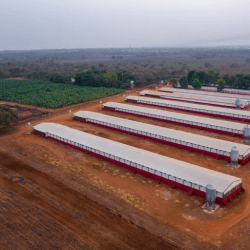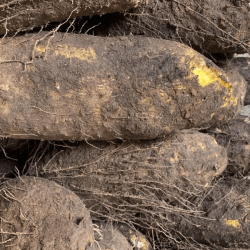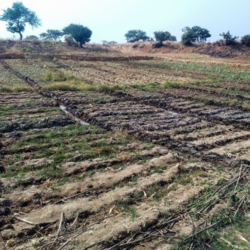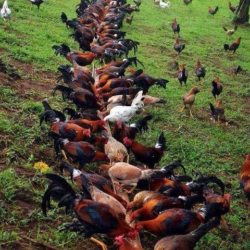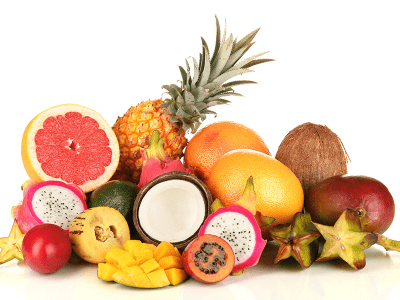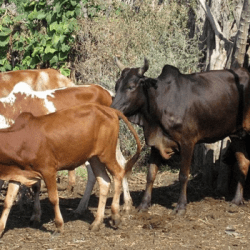Starting a goat farm in 2025 can be a profitable and sustainable venture if approached with careful planning and informed decision-making. Below is a comprehensive guide covering everything you need to know before establishing your goat farm.
1. Define the Purpose of Farming
Before starting, determine the primary goal of your goat farm:
- Meat Production: Breeds like Boer or Kiko goats are ideal for high-quality meat.
- Milk Production: Consider dairy breeds like Saanen, Alpine, or Nigerian Dwarf goats.
- Fiber Production: Opt for breeds like Angora goats for mohair or Cashmere goats.
- Mixed Purpose: Some breeds, like Nubians, can provide both milk and meat.
2. Legal and Regulatory Requirements
Compliance with laws and regulations is essential:
- Zoning Laws and Permits: Ensure the farm location meets local zoning regulations for livestock.
- Animal Welfare Standards: Familiarize yourself with goat welfare laws to ensure humane treatment.
- Farm Registration: Some regions require registration of farms and livestock for health monitoring.
3. Farm Location and Infrastructure
Land Requirements:
- For grazing, provide 1–2 acres for every 10–20 goats, depending on vegetation quality.
Shelter:
- Build clean, ventilated, predator-proof housing.
- Space Requirements:
- Indoors: 10–15 sq. ft. per goat.
- Outdoors: 25–30 sq. ft. per goat.
Fencing:
- Use strong, durable fencing to keep goats secure and predators out.
- Options include electric fencing or woven wire fences.
4. Breed Selection
Choosing the right breeds is critical:
- Climate Compatibility: Select breeds suited to your region’s weather conditions.
- Purpose-Driven Breeds: Source from reputable breeders to ensure healthy, disease-free stock.
- Meat: Boer, Kiko.
- Milk: Saanen, Toggenburg.
- Fiber: Angora, Cashmere.
5. Feed and Nutrition
Proper nutrition is key to goat health and productivity:
- Diet Composition:
- Forage: Shrubs, leaves, and twigs (preferred over grass).
- Concentrates: Grains and protein supplements.
- Minerals: Ensure access to a mineral block or supplement to prevent deficiencies.
- Water: Provide clean, fresh water daily.
- Avoid Toxic Plants: Learn about local plants that may be harmful to goats (e.g., oleander, azaleas).
6. Health and Veterinary Care
Maintaining healthy goats ensures productivity and profitability:
- Vaccinations and Deworming: Develop a regular schedule to prevent diseases and parasite infestations.
- Local Veterinary Support: Establish a relationship with a reliable vet familiar with goats.
- Common Health Issues to Watch For:
- Parasites: Internal and external (e.g., worms, mites).
- Bloat: A life-threatening condition caused by overeating or sudden diet changes.
- Hoof Problems: Regular trimming is essential to prevent infections.
7. Breeding Management
Efficient breeding practices ensure a steady supply of goats:
- Breeding Age: Female goats (does) are typically bred at 12–15 months when they reach 70% of their adult weight.
- Gestation Period: Approximately 150 days.
- Kidding: Prepare a clean, safe area for births and provide proper postnatal care for does and kids.
8. Market Research and Business Plan
Understand your target market and develop a business plan:
- Identify demand for goat products in your region (meat, milk, fiber, etc.).
- Establish connections with local buyers, processors, or retailers.
- Plan for scalability based on market trends and potential returns.
9. Sustainable Practices for 2025
As environmental concerns grow, adopt sustainable farming methods:
- Rotational Grazing: Prevent overgrazing and maintain pasture health.
- Composting: Use goat manure to improve soil fertility.
- Renewable Energy: Consider solar panels for energy needs.
10. Record Keeping and Monitoring
Track all aspects of farm operations:
- Maintain records for breeding, health, and production.
- Use farm management software to streamline data collection and analysis.



